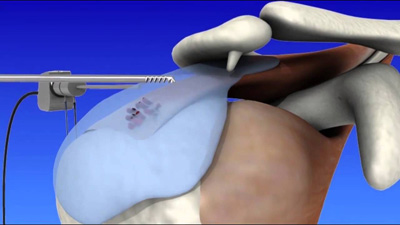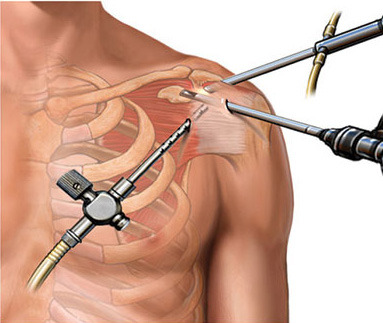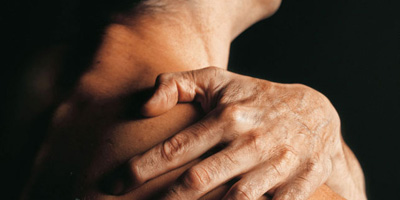|
Overview
 Shoulder arthroscopy is a
surgical procedure. A tiny camera called
arthroscope is inserted inside the
shoulder through a small incision to
examine and repair the tissues inside or
around the shoulder joint. This procedure
is being performed since 1970 s. This
process has made it faster and easier to
diagnose, treat and recover from a
surgery. With the development of new
instruments and surgical techniques, the
shoulder arthroscopy surgical procedure is
improving with each passing year. Shoulder arthroscopy is a
surgical procedure. A tiny camera called
arthroscope is inserted inside the
shoulder through a small incision to
examine and repair the tissues inside or
around the shoulder joint. This procedure
is being performed since 1970 s. This
process has made it faster and easier to
diagnose, treat and recover from a
surgery. With the development of new
instruments and surgical techniques, the
shoulder arthroscopy surgical procedure is
improving with each passing year.
When Shoulder
Arthroscopy is Recommended?
A person is
recommended this surgery when his pain
does not respond to any kind of
non-surgical treatment procedures like
physical therapy, medications, injections,
exercise or rest to reduce inflammation.
Inflammation is a normal body reaction to
any kind of disease or injury. A diseased
or injured shoulder joint will have
inflammation in the form of pain, swelling
and stiffness.
Most shoulder problems are result of
overuse, injury and age-related wear and
tear. Shoulder arthroscopy alleviates
painful symptoms of various problems that
harm the rotator cuff tendons, articular
cartilage, labrum and other soft tissues
around the join.
 Common
arthroscopic procedures consist of Common
arthroscopic procedures consist of
Bone spur removal
Rotator cuff repair
Repair of ligaments
Repair or removal of the labrum
Repairing of recurrent shoulder
dislocation
Removal of loose cartilage or inflamed
tissue
Less common
arthroscopic procedures consist of
Fracture repair
Nerve release
Cyst excision
 What
Kind of Shoulder Problems Demands Shoulder
Arthroscopy? What
Kind of Shoulder Problems Demands Shoulder
Arthroscopy?
If you are suffering
from any of the following problems, you
may be asked to opt for this surgical
procedure:
A damaged or torn cartilage ring or
ligaments
A damaged or torn biceps tendon
Damaged or inflamed lining of the joint
caused by illness like rheumatoid
arthritis
Loose tissue that needs immediate
removal
Shoulder instability
A torn rotator cuff
Shoulder impingement syndrome
A bone spur
Inflammation around the rotator cuff
Risks Involved
with the Surgery
Shoulder arthroscopy
does not generally result in any kind of
complication for patients. However, the
risks cannot be ruled out completely. The
following are the risks involved which can
be easily treated:
 Allergic reaction to anesthetic medicines
Allergic reaction to anesthetic medicines
Breathing problems
Infection
Bleeding
Blood clot
Weakness of the shoulder
May fail to repair or heal the problem
Shoulder stiffness
Injury to a nerve or blood vessel
Before the
Procedure
Inform your health
care service provider about any kind of
prescribed or non-prescribed medicine,
supplement or herb you are taking.
2 Weeks Before the
Surgery
You may be asked to
stop taking any medicine that makes it
difficult to clot blood.
Ask your surgeon to tell the name of the
medicines if any you can still take till
the date of surgery.
Your surgeon may ask you to visit your
doctor who regularly treats you for
diseases like heart disease, diabetes,
etc.
Let your surgeon know the amount of
alcohol you are consuming.
Try to stop smoking as it slows down the
rate of wound and bone healing.
Make it clear to your surgeon if you
have any fever, cold, flu. Herpes breakout
or anything else before the surgery.
On the Day of
Surgery
You would be asked
not to eat or drink anything before 6 to
12 hours of the surgery.
If you are advised to take any medicine
on that day, do that with a small amount
of water if needed.
After the
Procedure
It may take 1
to 6 months to recover completely after
the surgery. You would be asked to wear a
sling in the first week after the surgery.
If there is much repair to be done, the
sling bag has to be carried for a little
longer. The doctor may give you medicines
to cope up with the pain. It will depend
on the kind of surgery you went through to
suggest when you can go back to work or
play sports. It can take just 1 week or
several months. Your doctor would tell you
about that. You may also take physical
therapy to recover quickly if suggested by
the doctor.
It is extremely important to follow the
guidelines provided by your surgeon for a
quick and steady recovery.
|